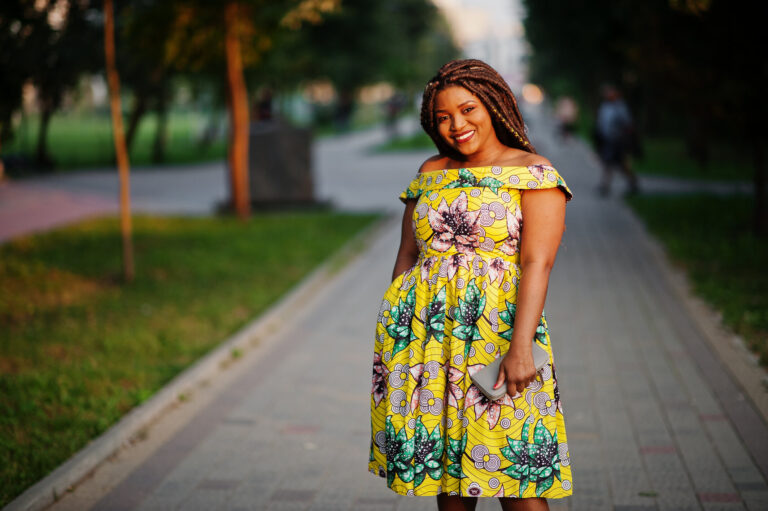Sewing Success: How to Perfectly Sew 7 Different Types of Sleeves
Sleeve sewing is an important skill for any sewing enthusiast, and mastering different sleeve styles can take your sewing projects to the next level. In this post, we’ll cover how to perfectly sew 7 different types of Sleeves and tips for achieving a professional-looking finish.
Whether you’re a beginner or an experienced sewer, this guide will help you perfect your sleeve sewing techniques and create garments that fit and flatter.
Common Challenges in Sleeve Sewing
Sleeve sewing can be tricky, especially if you’re new to sewing or working with a challenging fabric. Some common problems that people face when sewing sleeves include puckering, uneven gathers, and awkward fit.
However, with the right technique and attention to detail, these challenges can be overcome. Here are some tips for overcoming common sleeve sewing problems:
Puckering
Puckering can happen when you sew too tightly or use the wrong tension. To avoid puckering, use the correct tension and stitch length for your fabric, and make sure your fabric is flat and smooth as you sew.
Uneven gathers
Uneven gathers can make your sleeves look messy and unprofessional. To avoid this, make sure your gathers are evenly distributed along the sleeve cap, and adjust the gathering stitch as needed to achieve the desired fullness.
Awkward fit
Sleeves that are too tight or too loose can be uncomfortable and unflattering. To ensure a good fit, measure your armhole carefully and adjust the sleeve pattern accordingly, and make any necessary adjustments to the sleeve cap or underarm seams as you sew.
Also read: Sewing Success: How to Make a Beautiful Silk Shirt with Bold Sleeves in Just 6 Steps
Tools and Materials Needed for Sleeve Sewing
To sew sleeves successfully, you’ll need some basic sewing tools and materials, including:
- Sewing machine: A sewing machine is essential for most sleeve styles, as it can create the even and secure stitching required for a professional-looking finish.
- Thread: Choose a high-quality thread that matches your fabric for a seamless finish.
- Fabric: Depending on the sleeve style, you’ll need a suitable fabric that’s lightweight and flexible enough to accommodate the curves of the sleeve.
- Scissors: Sharp fabric scissors are essential for cutting your fabric accurately and cleanly.
- Pins: Pins are useful for holding your fabric in place as you sew, especially when attaching the sleeve to the garment.
- Iron: An iron is essential for pressing your seams and creating a crisp finish.
- Notions: Depending on the sleeve style, you may need additional notions such as elastic, bias tape, or interfacing.
How to Perfectly Sew 7 Different Types of Sleeves
Now let’s dive into how to perfectly sew 7 different types of sleeves, from the simplest to the most complex.
1. Cap Sleeves
Cap sleeves are a popular style for tops and dresses, and they’re relatively easy to sew. Here’s how to do it:
Cut out your fabric according to your pattern instructions, and finish the edges as desired.
- Pin the sleeve to the garment at the shoulder seam, right sides together.
- Sew the sleeve to the garment, using a straight stitch and a 5/8 inch seam allowance.
- Add finishing touches to the raw edges using a overlock stitch or zigzag stitch.
- Press the seams flat.
2. Puff Sleeves
Puff sleeves are a fun and feminine style that add volume to your garment. Here’s how to sew them:
- Cut out your fabric according to your pattern instructions, and finish the edges as desired.
- Sew two rows of gathering stitches along the sleeve cap, about 1/4 inch apart.
- Pull the gathering threads to create even gathers that fit the armhole of your garment.
- Pin the sleeve to the garment at the shoulder seam, right sides together.
- Adjust the gathers as needed to fit the armhole, and pin the underarm seam together.
- Sew the sleeve to the garment, using a straight stitch and a 5/8 inch seam allowance.
- Add finishing touches to the raw edges using a overlock stitch or zigzag stitch..
- Press the seams flat, and trim any excess threads.
3. Bishop Sleeves
Bishop sleeves are a flowy and romantic style that are perfect for blouses and dresses. Here’s how to sew them:
- Cut out your fabric according to your pattern instructions, and finish the edges as desired.
- Sew two rows of gathering stitches along the sleeve cap, about 1/4 inch apart.
- Pull the gathering threads to create even gathers that fit the armhole of your garment.
- Pin the sleeve to the garment at the shoulder seam, right sides together.
- Pin the underarm seam together, making sure the gathers are evenly distributed.
- Sew the sleeve to the garment, using a straight stitch and a 5/8 inch seam allowance.
- Add finishing touches to the raw edges using a overlock stitch or zigzag stitch..
- Press the seams flat, and trim any excess threads.
4. Raglan Sleeves
Raglan sleeves are a classic style that feature a diagonal seam that runs from the underarm to the neckline. Here’s how to sew them:
- Cut out your fabric according to your pattern instructions, and finish the edges as desired.
- At the shoulder seam, pin both the front and back pieces of the main material together.
- Pin the raglan sleeve to the garment, right sides together, making sure the diagonal seam matches up with the shoulder seam.
- Sew the sleeve to the garment, using a straight stitch and a 5/8 inch seam allowance.
- Finish the raw edges with a zigzag stitch or overlock stitch.
- Press the seams flat, and trim any excess threads.
5. Kimono Sleeves
Kimono sleeves are a relaxed and comfortable style that are perfect for loungewear and casual tops. Here’s how to sew them:
- Cut out your fabric according to your pattern instructions, and finish the edges as desired.
- Pin the sleeve to the garment at the shoulder seam, right sides together.
- Pin the side seams and sleeve seams, right sides together.
- Sew the side seams and sleeve seams, using a straight stitch and a 5/8 inch seam allowance.
- Finish the raw edges with a zigzag stitch or overlock stitch.
- Hem the sleeve as desired.
- Press the seams flat.
6. Lantern Sleeves
Lantern sleeves are a trendy and fashionable style that add volume to your garment. Here’s how to sew them:
- Cut out your fabric according to your pattern instructions, and finish the edges as desired.
- Sew two rows of gathering stitches along the sleeve cap, about 1/4 inch apart.
- Pull the gathering threads to create even and full gathers, distributing them evenly along the sleeve cap.
- Pin the sleeve to the garment at the armhole, right sides together.
- Sew the sleeve to the garment, using a straight stitch and a 5/8 inch seam allowance.
- Pin the side seams and sleeve seams, right sides together.
- Sew the side seams and sleeve seams, using a straight stitch and a 5/8 inch seam allowance.
To create the lantern shape, measure 2-3 inches down from the sleeve cap and mark a horizontal line.
- Cut along the line, separating the sleeve into two pieces.
- Hem the bottom edge of each sleeve piece as desired.
- Pin the side seams and sleeve seams of each sleeve piece, right sides together.
- Sew the side seams and sleeve seams, using a straight stitch and a 5/8 inch seam allowance.
- Press the seams flat.
7. Flutter Sleeves
Flutter sleeves are a cute and feminine style that are perfect for summer dresses and tops. Here’s how to sew them:
- Cut out your fabric according to your pattern instructions, and finish the edges as desired.
- Sew two rows of gathering stitches along the sleeve cap, about 1/4 inch apart.
- Pull the gathering threads to create even and full gathers, distributing them evenly along the sleeve cap.
- Hem the bottom edge of the sleeve as desired.
- Fold the sleeve in half lengthwise, right sides together, and sew the short ends together, using a straight stitch and a 5/8 inch seam allowance.
- Turn the sleeve right side out.
- Pin the sleeve to the garment at the armhole, right sides together.
- Sew the sleeve to the garment, using a straight stitch and a 5/8 inch seam allowance.
- Press the seams flat.
Conclusion
Sewing sleeves can seem intimidating at first, but with practice and patience, you can master the techniques needed to sew seven different types of sleeves.
Remember to choose the right needle and thread for your fabric, take your time when sewing the sleeve to the garment, and finish the raw edges with a zigzag stitch or overlock stitch.
With these tips in mind, you’ll be able to sew beautiful and professional-looking sleeves that will elevate any garment. Happy sewing!



